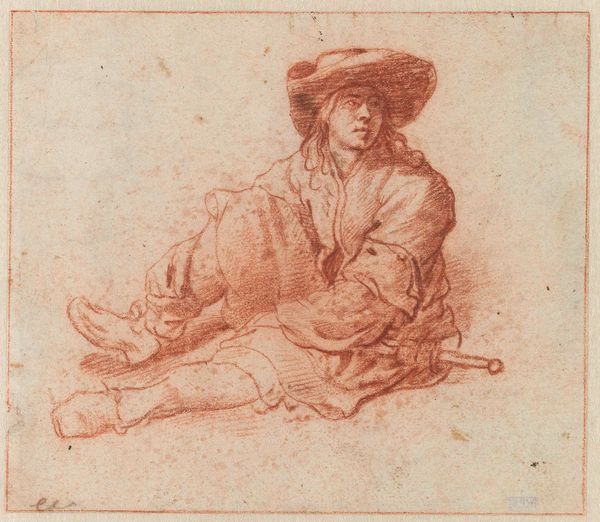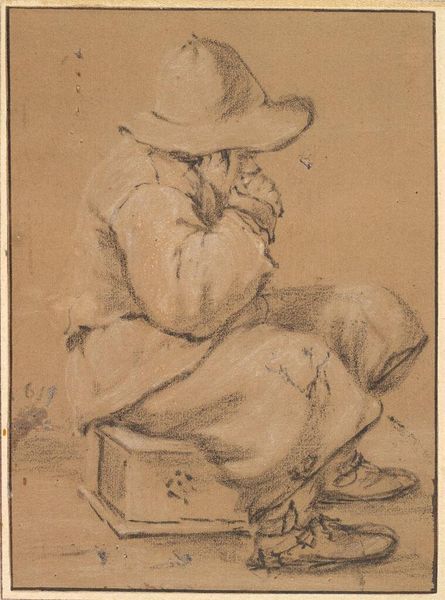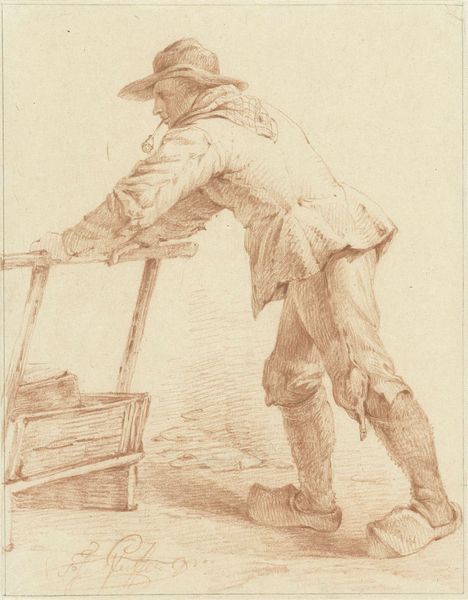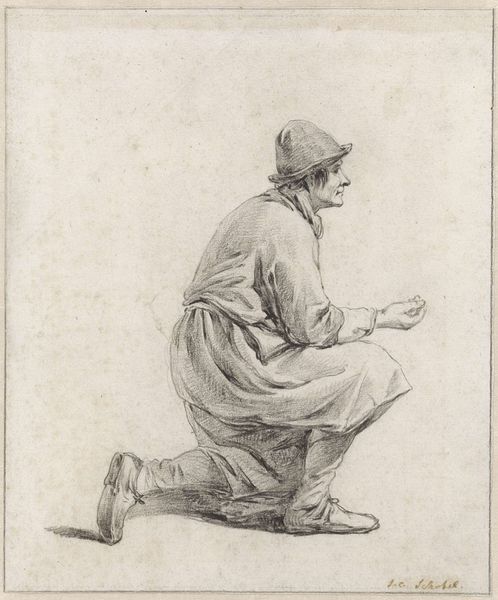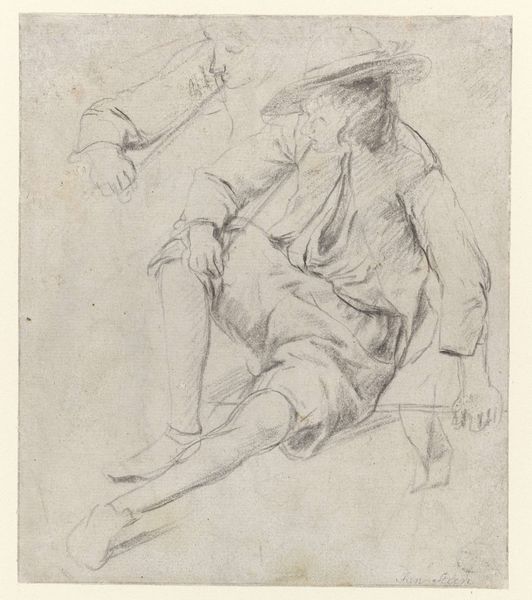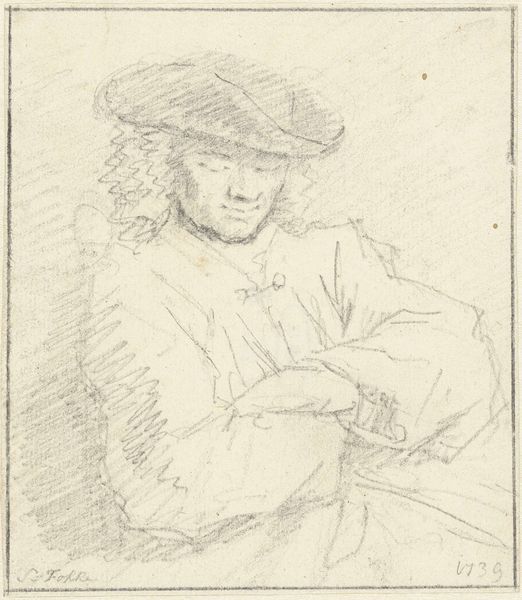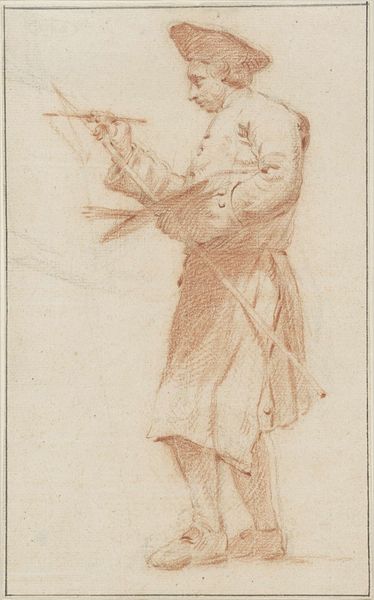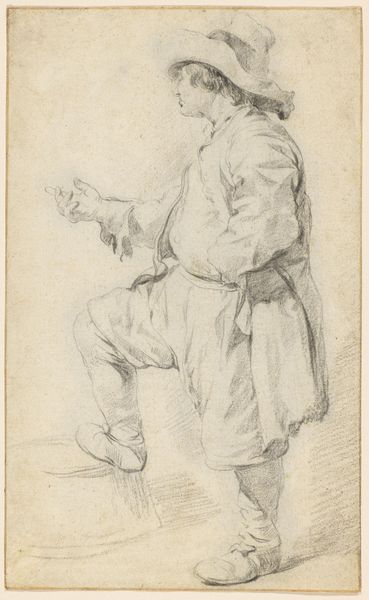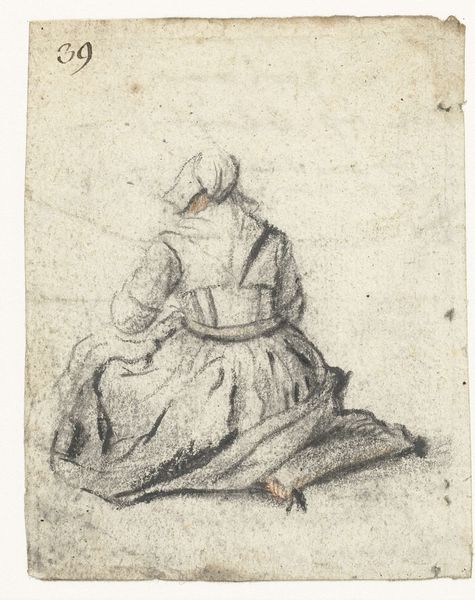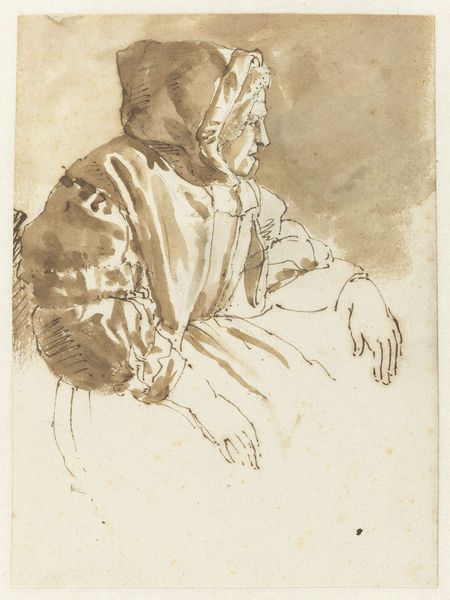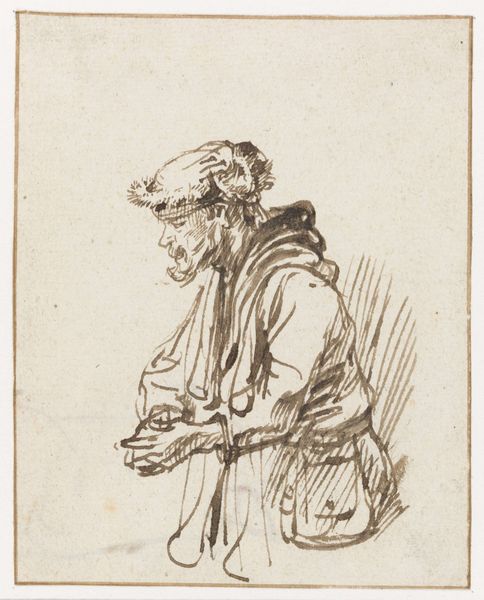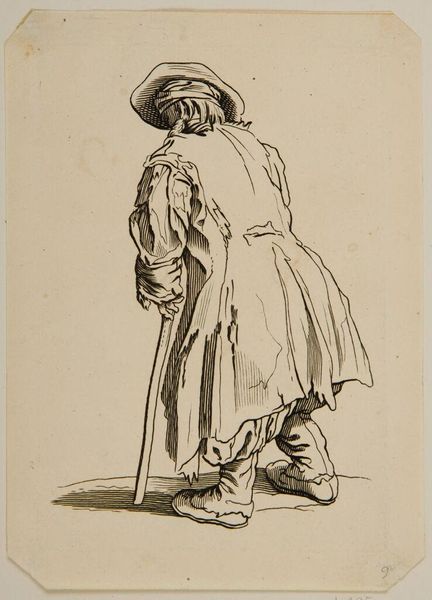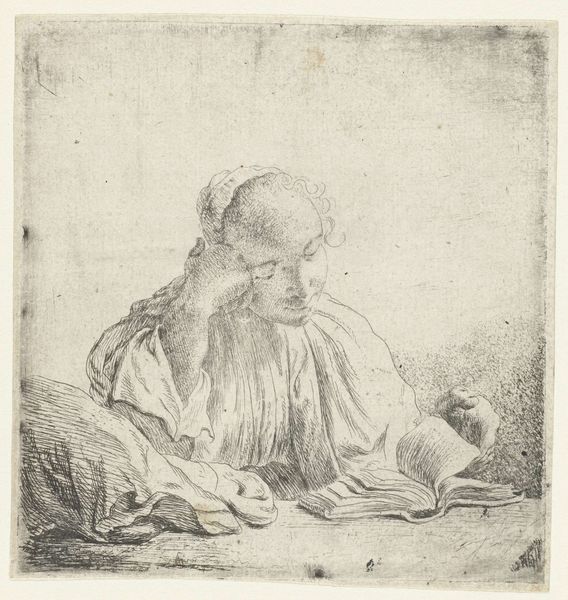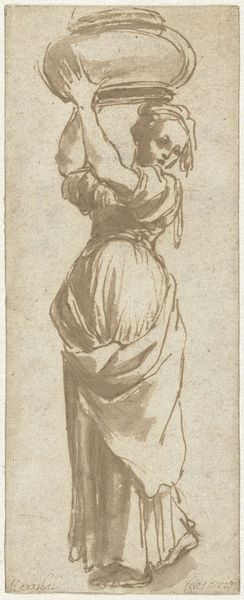
drawing, paper, pencil
#
portrait
#
drawing
#
dutch-golden-age
#
charcoal drawing
#
figuration
#
paper
#
pencil drawing
#
pencil
#
portrait drawing
#
genre-painting
#
realism
Copyright: Public Domain: Artvee
Editor: So here we have "A Milkmaid," a drawing made between 1642 and 1646 by Aelbert Cuyp. It looks like it was made with pencil on paper. What immediately strikes me is the pose – it feels very deliberate, yet the rest of the scene is barely sketched. How do you interpret this work? Curator: Indeed. Formally, the emphasis resides within the interplay between the solid figure and the tentative lines suggesting an atmospheric perspective. Observe how Cuyp utilizes variations in the density and directionality of his pencil strokes to articulate the form of the milkmaid. The strategic deployment of light and shadow models her figure, grounding it within the composition. Editor: It's almost as if the milkmaid exists in one space, while the landscape exists in another, solely as thin lines, with seemingly no relation to her. What do you make of that deliberate contrast? Curator: Consider the work's structural balance: The weighty presence of the figure is visually stabilized by the lighter, airy landscape behind. It might also reveal something of Cuyp's artistic priorities—a focus on rendering human form and presence, and a formal meditation of the woman's inner psyche, rather than the details of the environment around her. The setting becomes secondary, merely suggestive. Editor: I see what you mean. Looking at it again, her form is incredibly detailed and dense with shading while the thin lines in the backdrop suggest a sort of 'echoing' of her energy... Curator: Precisely. These compositional decisions invite contemplation on the relative importance of subject and setting, and also on Cuyp’s understanding of the potential of pure form. What might at first appear as imbalance is actually an intricate strategy to pull our attention and, ultimately, suggest deeper questions. Editor: That’s a perspective shift for me. I went in thinking something was missing from the piece, and now I see the sketch-like background is itself a deliberate statement about drawing. Curator: A fascinating realization, isn’t it?
Comments
No comments
Be the first to comment and join the conversation on the ultimate creative platform.
